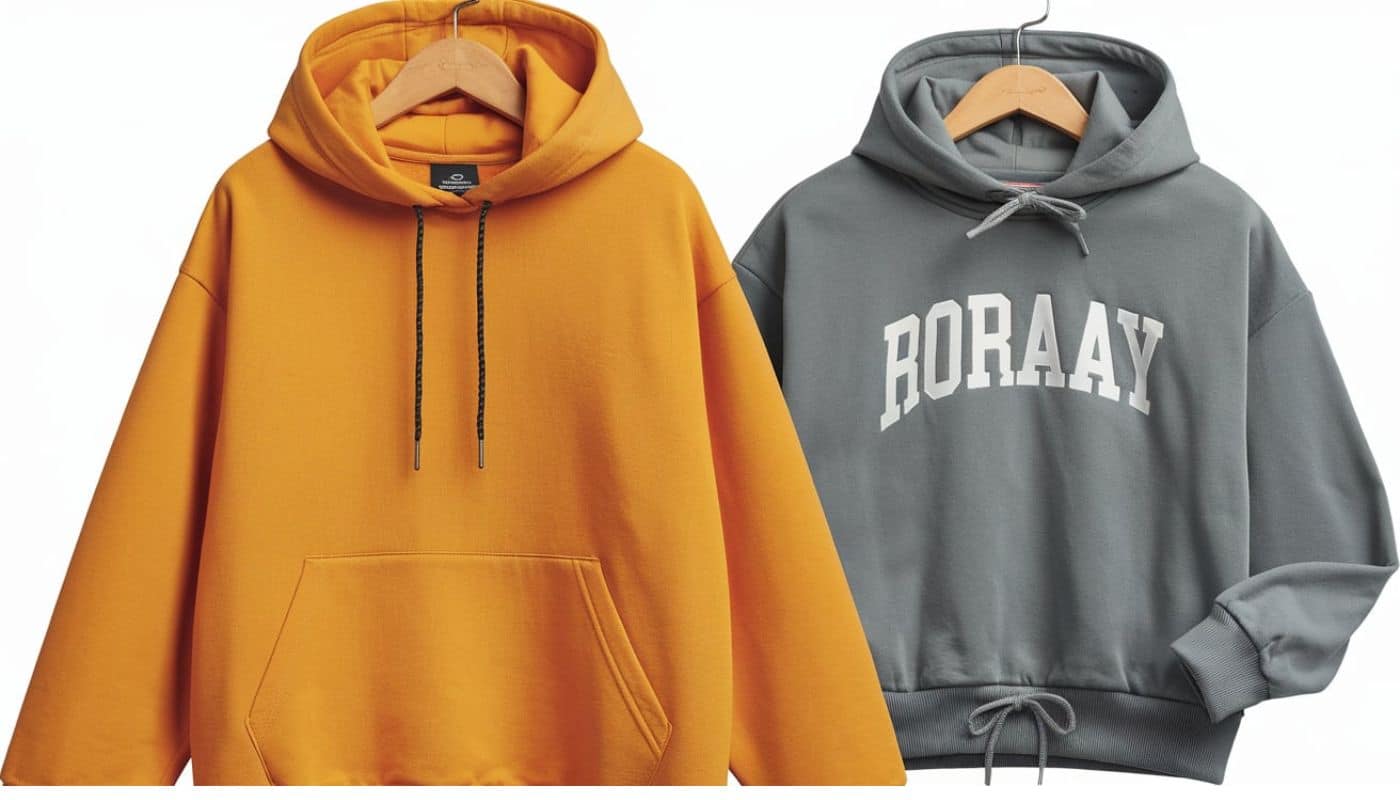The hoodie—or is it hoody?—has become one of the most iconic pieces of clothing in modern fashion. Whether you’re lounging at home, hitting the gym, or making a statement on the streets, this versatile garment has cemented its place in wardrobes worldwide. But the spelling debate between “hoodie” and “hoody” has sparked curiosity and confusion. Which one is correct? Does it even matter? In this comprehensive guide, we’ll dive deep into the history, cultural significance, and regional preferences behind these spellings, while exploring why this humble piece of clothing has become a global phenomenon.
Hoodie vs. Hoody: The Spelling Breakdown
When it comes to spelling, “hoodie” is the clear winner in terms of popularity and acceptance. But why does “hoody” still pop up occasionally? Let’s break it down.
Hoodie: The Dominant Spelling
- “Hoodie” is the most widely recognized spelling globally.
- Major dictionaries like Merriam-Webster and Oxford English Dictionary list “hoodie” as the standard term.
- It’s the preferred spelling in American English, which dominates global media and fashion branding.
- Example: Brands like Supreme and Balenciaga use “hoodie” in their marketing and product descriptions.
Hoody: The Less Common Variant
- “Hoody” is a less common alternative, often seen in British English.
- Some argue it’s a phonetic spelling, reflecting how the word sounds when spoken.
- Niche communities and smaller brands sometimes use “hoody” to stand out or appeal to specific audiences.
Fun Fact: A quick Google search reveals that “hoodie” gets over 10 times more searches than “hoody”, highlighting its dominance in digital culture.
The Evolution of the Hoodie: A Cultural Icon
The hoodie isn’t just a piece of clothing—it’s a symbol of comfort, rebellion, and self-expression. Let’s take a journey through its history.
A Brief History of the Hooded Garment
- The concept of a hooded garment dates back to medieval Europe, where monks wore hooded robes for warmth and anonymity.
- In the 1930s, the modern hoodie was born when Champion, an American sportswear brand, created the first hooded sweatshirt for laborers working in cold conditions.
- By the 1970s, the hoodie had transitioned from workwear to sportswear, becoming a staple for athletes and gym-goers.
The Hoodie’s Rise in Pop Culture
- The 1980s and 1990s saw the hoodie embraced by hip-hop culture, skateboarders, and rebellious youth movements.
- Movies like Rocky (1976) and E.T. (1982) featured iconic hoodie moments, cementing its place in pop culture.
- Today, the hoodie is a symbol of urban culture and streetwear, worn by everyone from teenagers to billionaires like Mark Zuckerberg.
Quote:
“The hoodie is more than just a piece of clothing—it’s a blank canvas for self-expression.” – Anonymous fashion blogger.
Regional Preferences: American vs. British English
The spelling debate often boils down to regional differences. Let’s explore how American English and British English handle the hoodie vs. hoody debate.
Hoodie in American English
- In the U.S., “hoodie” is the undisputed champion.
- It’s the spelling used in fashion branding, media, and everyday conversation.
- Example: Online retailers like Amazon and Nike overwhelmingly use “hoodie” in their product listings.
Hoody in British English
- In the UK, “hoody” occasionally appears, though it’s far less common than “hoodie.”
- Some British publications and brands use “hoody” to reflect regional spelling preferences.
- Example: The British tabloid The Sun has used “hoody” in headlines to describe youth fashion trends.
Table: Hoodie vs. Hoody Usage by Region
| Region | Preferred Spelling | Example Brands/Publications |
|---|---|---|
| United States | Hoodie | Nike, Supreme, Balenciaga |
| United Kingdom | Hoodie (sometimes Hoody) | The Sun, ASOS, Burberry |
Fashion Branding and the Spelling Divide
Fashion brands play a significant role in shaping how we spell and perceive the hoodie. Let’s look at how branding influences this debate.
How Brands Influence Spelling Choices
- High-end fashion labels like Balenciaga and Off-White use “hoodie” to align with global trends and SEO best practices.
- Niche or indie brands might opt for “hoody” to create a unique identity or appeal to specific subcultures.
The Role of Marketing and SEO
- Search Engine Optimization (SEO) plays a huge role in spelling preferences.
- “Hoodie” consistently outperforms “hoody” in search trends, making it the go-to spelling for online retailers and influencers.
- Example: A Google Trends analysis shows that searches for “hoodie” spike during the fall and winter months, reflecting its association with warmth and comfort.
Hoodie vs. Sweatshirt: What’s the Difference?
While the terms are often used interchangeably, there are key differences between a hoodie and a sweatshirt.
Defining the Hoodie
- A hoodie is a hooded sweatshirt, typically featuring a kangaroo pocket and drawstrings.
- It’s designed for both comfort and functionality, making it a favorite for athleisure and casual wear.
Defining the Sweatshirt
- A sweatshirt is a pullover or zip-up garment made from soft, absorbent fabric.
- Unlike a hoodie, it lacks a hood and often has a simpler design.
List: Key Features of a Hoodie
- Hood with drawstrings
- Kangaroo pocket
- Often made from fleece or cotton blend
- Versatile design for layering
The Plural Debate: Hoodies or Hoodys?
Even the plural form of hoodie sparks debate. Here’s what you need to know.
The Standard Plural Form
- “Hoodies” is the universally accepted plural form.
- It’s used in fashion branding, media, and everyday language.
The Case for “Hoodys”
- “Hoodys” is a rare, nonstandard variant.
- It’s occasionally seen in niche communities or informal contexts but lacks widespread acceptance.
The Influence of Digital Culture on Spelling
In the age of digital culture, spelling preferences are often shaped by SEO, social media, and online trends.
SEO and Online Trends
- “Hoodie” dominates search engine results, making it the preferred spelling for bloggers, influencers, and online retailers.
- Example: A search for “hoodie” on Amazon yields over 100,000 results, compared to just a few thousand for “hoody”.
Social Media and Viral Trends
- Platforms like Instagram and TikTok have amplified the hoodie’s popularity, with hashtags like #HoodieSeason and #HoodieStyle trending annually.
- Influencers and celebrities often showcase luxury hoodies from brands like Supreme and Off-White, further cementing the spelling “hoodie” in digital culture.
Conclusion: Which Spelling Should You Use?
After exploring the history, cultural significance, and regional preferences, it’s clear that “hoodie” is the standard spelling. Here’s why:
- It’s widely accepted in American English and British English.
- It performs better in SEO and online searches.
- It’s the preferred spelling for global fashion brands and pop culture.
However, if you’re aiming for a specific stylistic or regional effect, “hoody” can be a creative alternative. Ultimately, the choice is yours—but for clarity and global recognition, “hoodie” is the way to go.

Emily Hudson, the creative mind behind “English Summa,” is a passionate English language educator with a Bachelor’s Degree in English and a Teaching Certification. Dedicated to making the intricacies of English accessible to learners, Emily brings a blend of expertise and enthusiasm to her readers. Follow English Summa for insightful language tips, literary explorations, and a shared love for the beauty of English.














